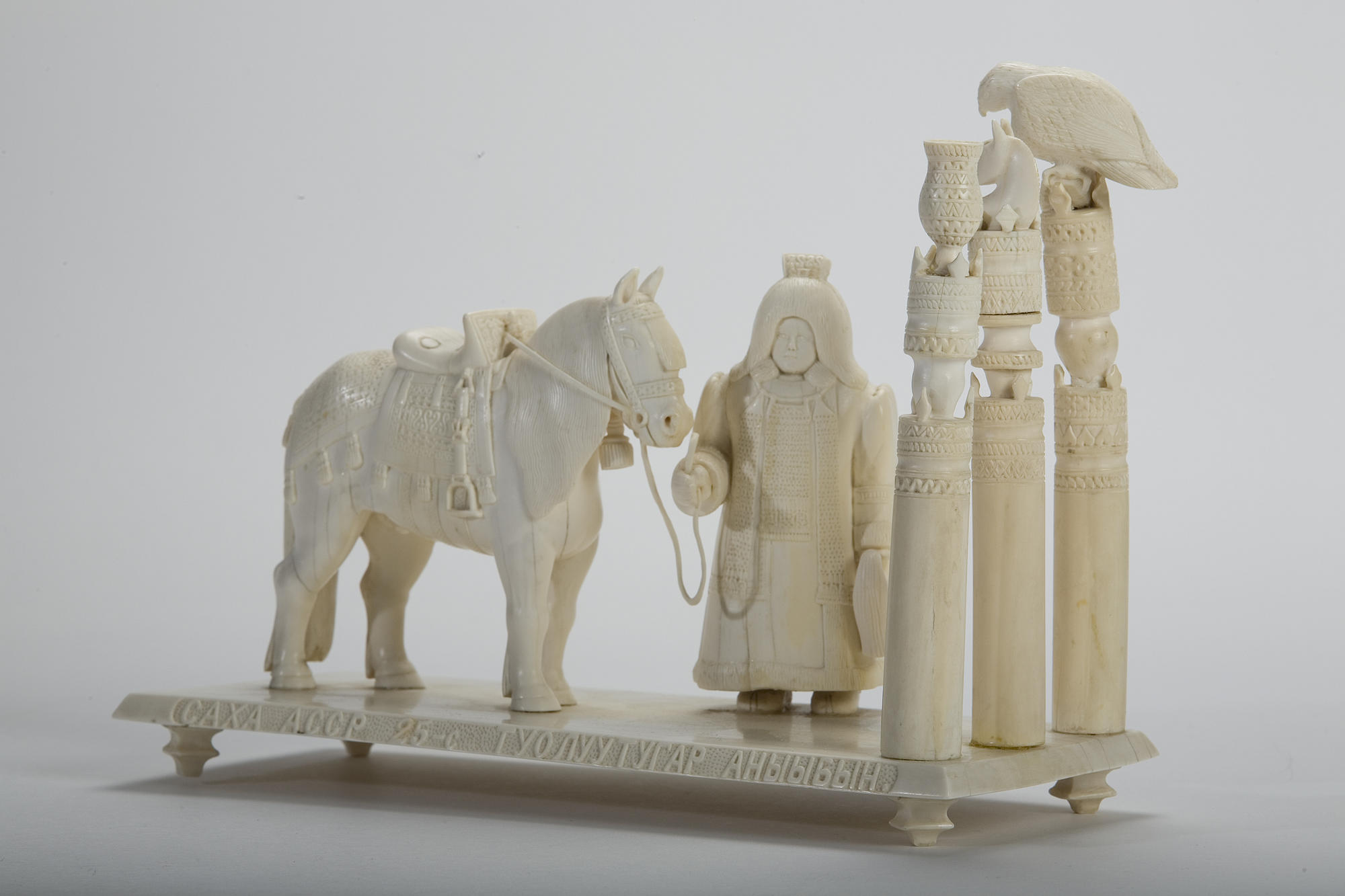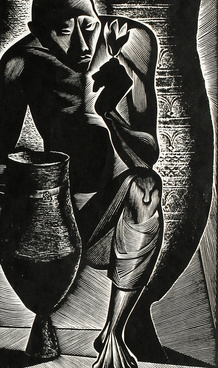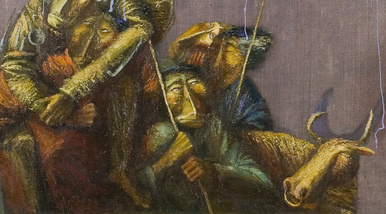Vasily Popov, one of the most famous craftsmen in Yakutia, descended from a family of five generations of skilled bone carvers. As a boy, he began to carve figurines from the ivory of mammoth tusks. During his lifetime, he gained recognition as a painter: he participated in numerous exhibitions and often took commissions. His works are held in the collection of the National Fine Arts Museum of the Republic of Sakha (Yakutia).
The art of bone carving in Yakutia began to develop at the end of the 18th century. Craftsmen carved items mainly from mammoth tusk, a material that lends itself well to carving and has various colour gradations from milky white and yellowish to golden brown.
Initially, craftsmen carved utilitarian articles: small boxes and chests, clock stands and combs. Later on, in the second half of the 19th century, they took special interest in carving decorative figures and in the spatial relationship of figures and objects choosing themes from different areas of life.
Popov carved the statuette A Yakut Woman at a Hitching Post in 1947. The composition is simple and clearly organised. The woman stands at three pillars holding a richly decorated horse on a tether. The figures are set on a base, its edges carved with the names of the craftsman and the place where he carved the statuette.
A hitching post, called a ‘sergeh’ in the Yakut language, is a sacred pillar. It was often placed near the house as a sign that the land had an owner. There is a saying in the Yakut language: ‘As long as the sergeh stands, the family is alive.’ The name ‘sergeh’ comes from the Yakut tradition of tying horses to such pillars.
In Yakut culture, the horse was not only a means of getting around; it also indicated its owner’s status. That is why the Yakuts paid great attention to decorating horses, saddles in particular. They used various techniques such as casting, embossing, engraving, niello, and gilding for saddle decoration. Sometimes saddles were covered with steel plates engraved with images of centaurs, lions, or unicorns as well as the initials of the owner or the craftsman.
The figurine A Yakut Woman at a Hitching Post combines traditional elements with a modern view of culture and the craftsman’s poetic mentality. Popov used Yakut folk images to emphasize ethnic awareness. His name is associated with the revival of the art of mammoth tusk bone carving as his artwork gave guidelines to other craftsmen to develop the bone-carving craft in Yakutia.



